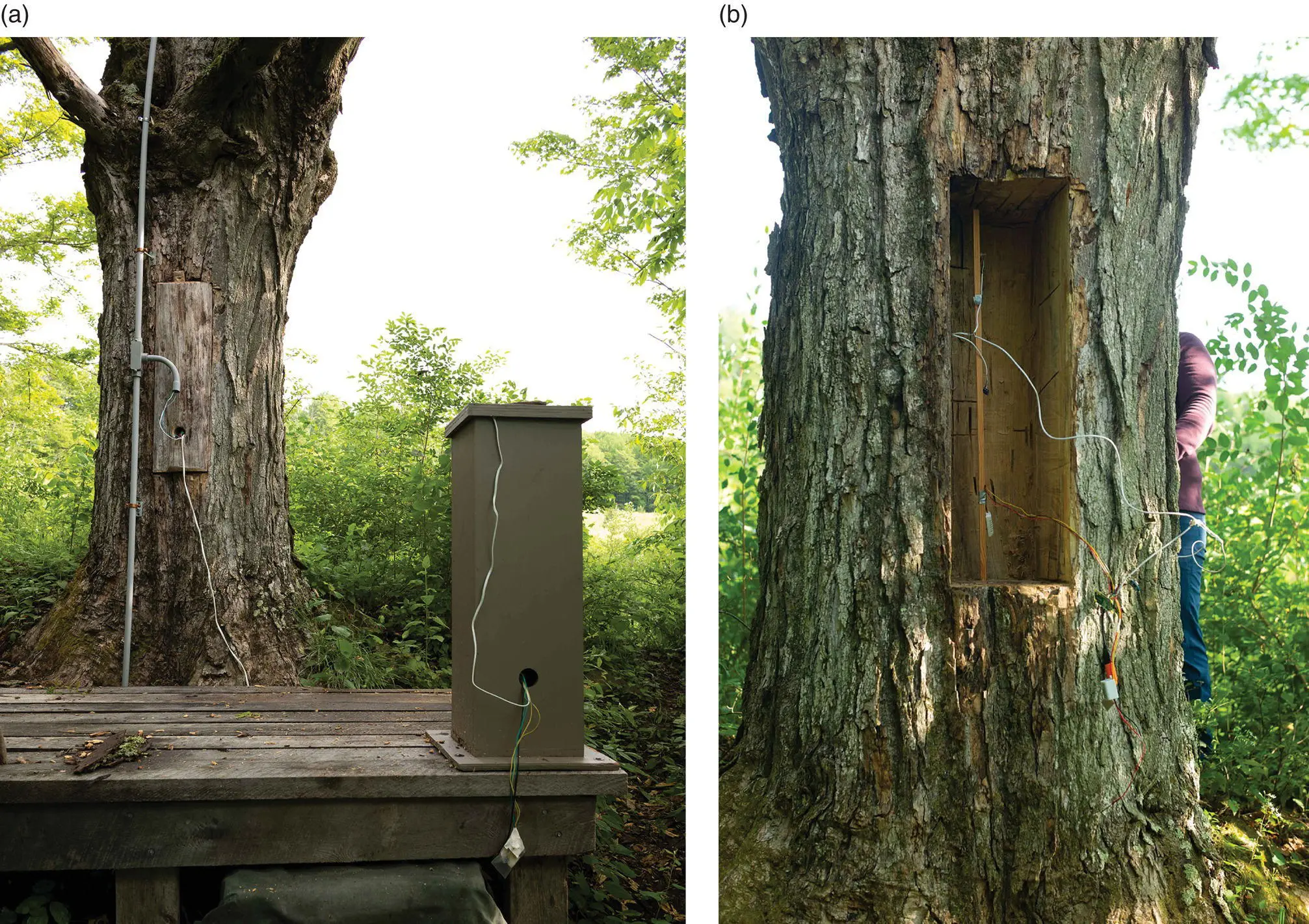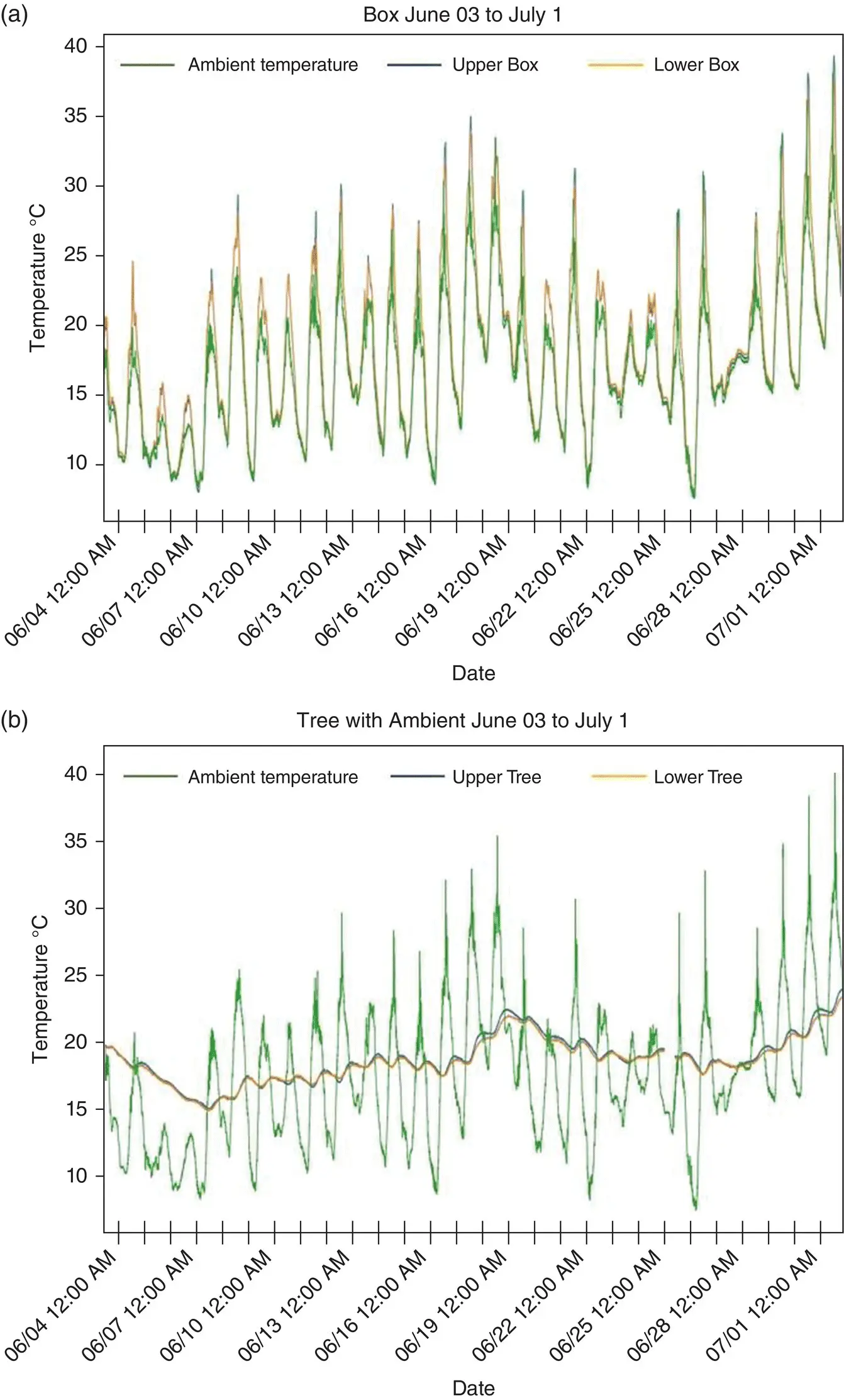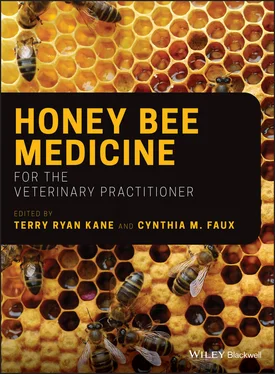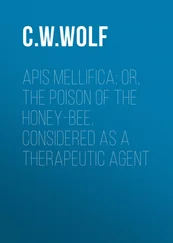1 ...8 9 10 12 13 14 ...41
Wall Thickness and Thermoregulation
Seeley and Morse (1976) reported that the average wall thickness of natural nest cavities is approximately 20 cm (~8 in.). The wall thickness of a standard Langstroth hive is just 1.9 cm (0.75 in.), hence some 10 times thinner than the nest cavity wall of a bee tree. The reduced wall thickness in Langstroth hives creates a large reduction in nest insulation, possibly resulting in adverse effects on colony energetics. Large temperature fluctuations inside a hive exacerbate colony stress by increasing the demands on colony nutrition and hydration (more nectar and water foraging trips), by impairing a colony's ability to maintain thermal homeostasis (more fanning and “bearding” when it is hot, and more metabolic heat production when it is cold), and by hastening entry into a winter cluster – all of which increase the physiological demands on the colony (Mitchell 2016).
Coombs et al. (2010) found that natural tree cavities buffered environmental temperatures such that tree cavities were cooler than ambient during the day and warmer than ambient during the night. During the day, the tree diameter at breast height was the most important variable determining cavity temperature. At night, diameter and tree health were important with large living trees offering the most stable thermal environment. We compared the ambient temperatures inside two tall, man‐made cavities; one was inside a rectangular wooden box (built of 1.9 cm thick pine boards, as used for Langstroth hives) and the other inside a living sugar maple tree ( Acer saccharum ) ( Figure 1.5). These two cavities were built with the same dimensions (24 cm × 24 cm × 87 cm), which mimicked those of a typical tree cavity of a wild colony [see Tree Beekeeping by Powell (2015)]. Temperature recordings over a year revealed striking differences in interior temperature dynamics between the two cavities. In the poorly insulated box, the temperature closely followed the ambient temperature; the thin walls provided little or no temperature buffering. In the tree, though, the temperatures varied much less; they did not reach the extreme highs and lows found inside the uninsulated box (Seeley and Radcliffe unpublished data; see Figure 1.6a,b).

Figure 1.4 An illustration comparing the structure and organization of a honey bee nest as found in a bee tree (left) and a standard Langstroth hive made up of two deep hive bodies (right). The colors correspond to brood and hive products. A typical bee tree cavity has a volume averaging 40 l, whereas two deep hive bodies have a volume of 80 l. These differences in cavity volume are directly correlated with the size of a colony's brood nest and varroa reproductive success.
Mitchell (2016) found that heat is transferred four to seven times faster across the thin walls of a traditional hive relative to the walls of a natural (bee tree) enclosure. To maintain a colony's cluster core temperature of 35 °C (the set point of the brood nest), any energy lost through transfer from the hive walls must be replaced through the bees' metabolic activity (bees isometrically contract their flight muscles to generate heat). Mitchell predicted that colonies living in hives (or trees) providing well‐insulated cavities will not need to assemble into tight clusters until the ambient temperature is below 0°C. Mitchell concluded that the high thermal insulation of nests in bee trees results in increased relative humidity inside the cavity, decreased reproduction by Varroa mites, and enhanced survival of honey bee colonies.

Figure 1.5 A research station beside the Shindagin Hollow State Forest in upstate New York. It was designed to test the environmental fluctuations – temperature (°C) and relative humidity (%) – inside two cavities of identical dimensions but with walls of different thicknesses, c. 2 cm vs. 20–30 cm. One (a) is a wooden box with walls like those of a Langstroth hive and the other (b) is a live sugar maple tree ( Acer saccharum ) in which a typical size bee cavity was cut using a chainsaw and adze. Source: Photo by Robin Radcliffe.
Propolis (“bee glue”) is a resinous substance collected by honey bees from the buds and wounds of trees. When combined with beeswax, it makes a cement that bees use to fill the crevices and coat the walls of their nest cavities, often completely enshrouding their nests. This coating of the walls, floor, and ceiling of the nests of wild colonies with tree resins makes a “propolis envelope” that can be 2–3 mm thick (Seeley and Morse 1976). The propolis lining of the nest cavity probably serves several functions: creating a solid surface for comb attachment, reducing cavity draftiness, enhancing nest defense, waterproofing, and bolstering a colony's defense against microbial infections.
Ancient Greeks used propolis to treat abscesses, Assyrians put it on their wounds, and Egyptians used it for embalming their dead. Although humans have long recognized the health benefits of propolis for its antiseptic, anti‐inflammatory, antibiotic, antifungal, anesthetic, and healing properties, only in the last century have humans discovered the specific compounds that give propolis its medicinal value – of the more than 180 compounds identified in propolis to date, one group (a class of plant‐based polyphenols known as flavonoids) are of particular interest for their protective antioxidant properties. These same compounds that mankind values in propolis also confer health benefits to the honey bee colony through social immunity – a collective behavioral defense that produces colony‐wide immunity that in turn reduces the expression of immune genes in individual bees (Borba et al. 2015).

Figure 1.6 A month‐long comparison of temperatures (°C) inside a thin‐walled nest cavity made of 1.9‐cm‐thick lumber (a) and inside a thick‐walled cavity made in a living sugar maple tree ( Acer saccharum ) having a wall thickness of 20–30 cm (b). Each cavity had two temperature probes, located c. 10 cm from either the floor or the ceiling of the cavity. In both figures the green line represents the ambient environmental temperature, while the orange and blue lines are the probes located within the respective cavities.
Curiously, the use of propolis for colony defense is limited to the temperate regions of the world. Neither the tropical honey bees in Asia ( A. cerana, Apis florea , and Apis dorsata ) nor those in Africa (the African subspecies of A. mellifera ) make use of propolis other than for structural purposes (Simone et al. 2009; Kuropatnicki et al. 2013). It is the European honey bees living in nature for which the collection and use of propolis for its colony‐level immunoprotective effects has reached its highest expression. Yet, rather than being viewed as a specific compound to be cultivated, propolis is more often than not regarded as an annoyance by modern beekeepers. Beekeepers are constantly scraping off propolis as they remove frames to manipulate their colonies. And the Langstroth hive bodies used by the vast majority of beekeepers today lack the rough inner surfaces of a bee tree or other natural cavity that stimulate propolis deposition by foragers. Colonies managed by beekeepers are not strongly stimulated to collect and use propolis. Indeed, it is the complex surface of the natural cavity that provides the tactile stimuli necessary for the deposition of propolis as a hive barrier by worker bees, something almost entirely lacking in modern hives made from smooth planed lumber (Hodges et al. 2018). Hodges and colleagues investigated three methods to increase the textural complexity of the interior surface of a standard hive body; these methods included using plastic propolis traps stapled to the inside wall surfaces, cutting horizontal parallel saw kerfs that were 7 cm apart and 0.3 cm deep, and roughening of the interior wall surface using a mechanical wire brush. The three interior hive wall types were compared to an unmodified, smooth‐walled hive by measuring the bees' propolis application. Although the colonies were not challenged with specific pathogens, all three texturing methods induced significantly more propolis deposition compared to controls. The authors concluded that using unplaned, rough lumber for the interior hive surfaces would increase propolis deposition over standard hives built using lumber that is planed smooth on both sides.
Читать дальше















